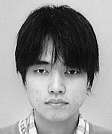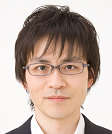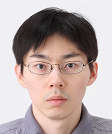「Proof of Soundness of Concurrent Separation Logic for GPGPU in Coq」
Proof of Soundness of Concurrent Separation Logic for GPGPU in Coq
[Journal of Information Processing Vol.24 No,1 , pp.132-140]
[情報処理学会論文誌 プログラミング Vol.8 No.4, Preprint掲載]
[Abstract]
In this paper, a concurrent separation logic for GPGPU, namely GPUCSL, is proposed and its soundness is proved by using Coq. GPUCSL is based on a CSL proposed by Blom et al., which is for automatic verification of GPGPU kernels, but employs different inference rules because the rules in Blom’s CSL are not standard. For example, Blom’s CSL does not have a frame rule. The CSL proposed is a simple extension of the original CSL, and it is more suitable as a basis of advanced properties proposed for other studies on CSLs. The soundness proof is based on Vafeiadis’ method, which is for a CSL with a fork-join concurrency model. The proof reveals two problems in Blom’s approach in terms of soundness and extensibility. First, their assumption that thread ID independence of a kernel implies barrier divergence freedom does not hold. Second, it is not easy to extend their proof to other CSLs with a frame rule. Although the CSL proposed covers only a subset of CUDA, the preliminary experiment shows that it is useful and expressive enough to verify a simple kernel with barriers.
[Recommendation]
This paper redesigns a concurrent separation logic for GPGPU (GPUCSL),
and proves the soundness of the logic by means of Coq, an interactive
theorem prover. In writing a program in a programming language for
GPGPU, a proper insertion of instructions for barrier synchronization
into the program is one of heavy burdens for programmers. The
construction of a program theory to reduce the burden on barrier
synchronization must be one of the important contribution of this
paper. It can be expected that the method shown in this paper would be
applicable to parallel execution and thus very useful. Furthermore,
the method can be used to verify that a program with barrier
synchronization in GPGPU satisfies its specification, and hence we can
expect that the result is widely applicable and very practical. The
use of Coq in proving soundness of GUPCSL is very interesting as an
application of interactive theorem provers. For these reasons above,
the paper deserves the Outstanding Paper Award, and we would recommend
this paper to the award.

Izumi Asakura
He received his B.S. and M.S. degrees from Department of
Mathematical and Computing Science, Tokyo Institute of Technology in
2014 and 2016, respectively.

Hidehiko Masuhara
He is a Professor of Mathematical and Computing Science,
Tokyo Institute of Technology. He is working on programming languages
and software development environment. He received his B.S., M.S., and
Ph.D. in Computer Science from Department of Information Science,
University of Tokyo in 1992, 1994, and 1999, respectively. Before
joining Tokyo Institute of Technology, he served as an assistant
professor, lecturer, and associate professor at Department of Graphics
and Computer Science, Graduate School of Arts and Sciences, University
of Tokyo.

Tomoyuki Aotani
He is an assistant professor at Department of Mathematical
and Computing Science, Tokyo Institute of Technology. He received his
BSc from Hosei University in 2004 and MA and PhD from the University of
Tokyo in 2006 and 2009, respectively. His research interests include
design of programming languages, program analysis, verification and
optimization.





